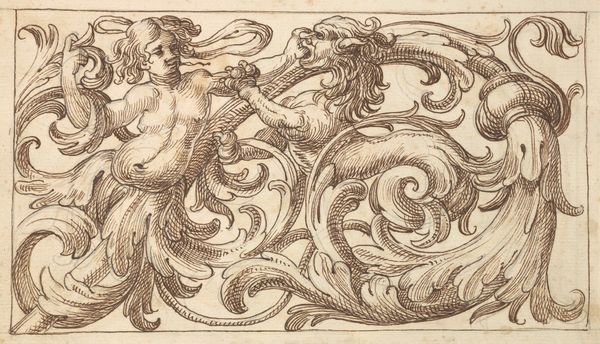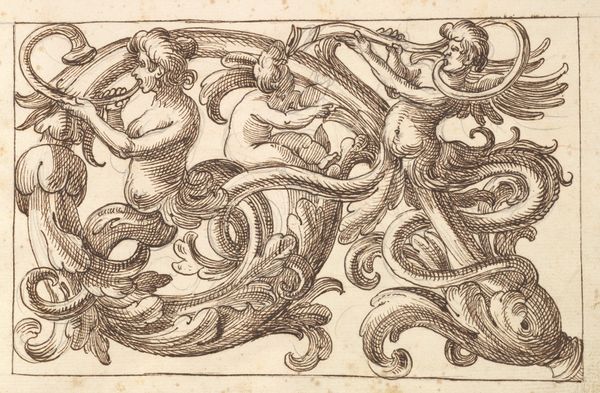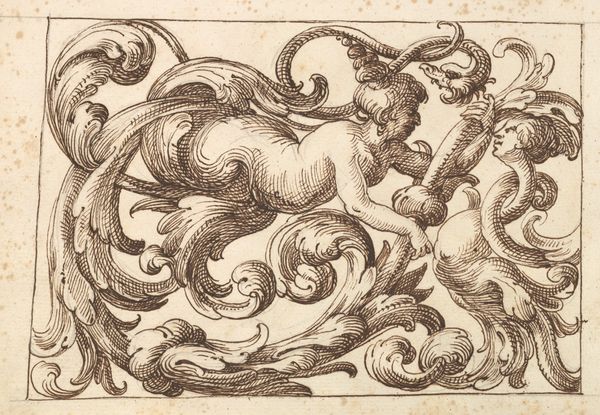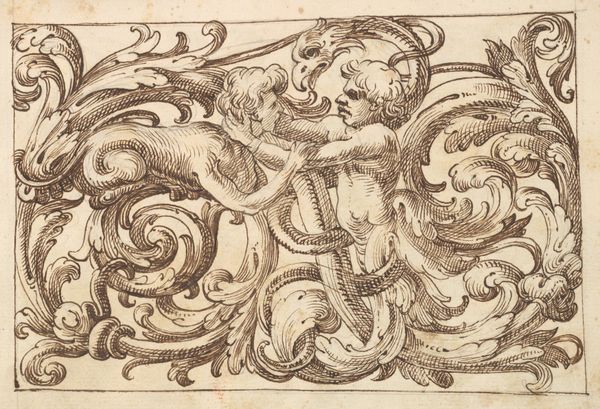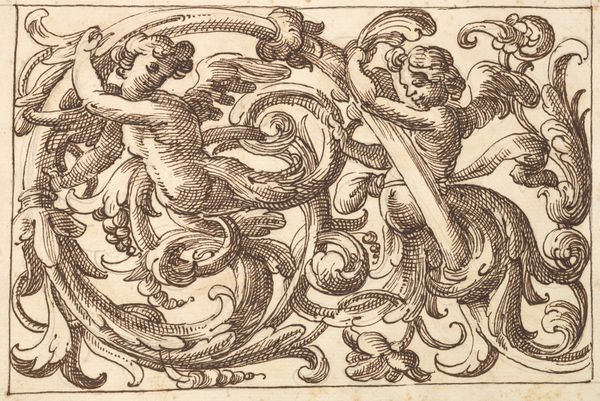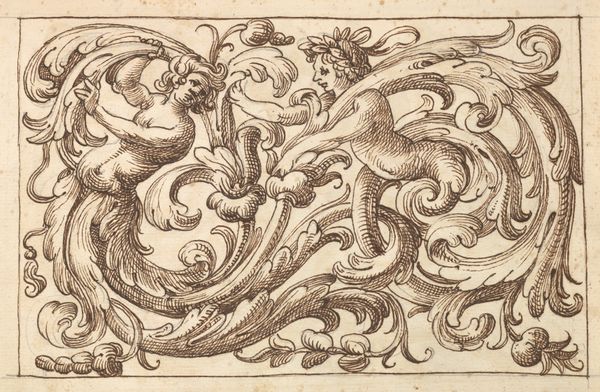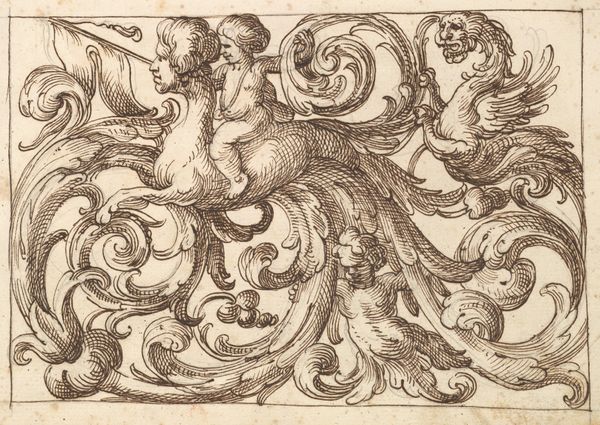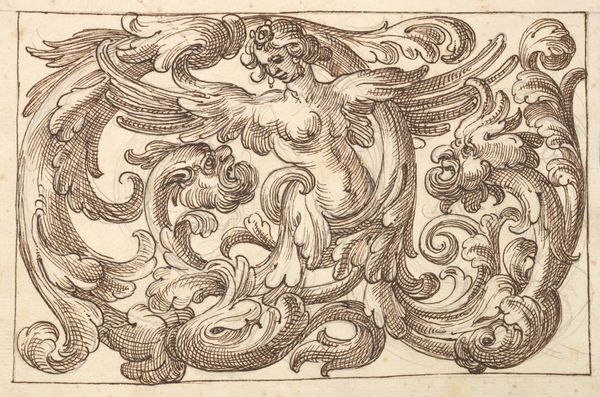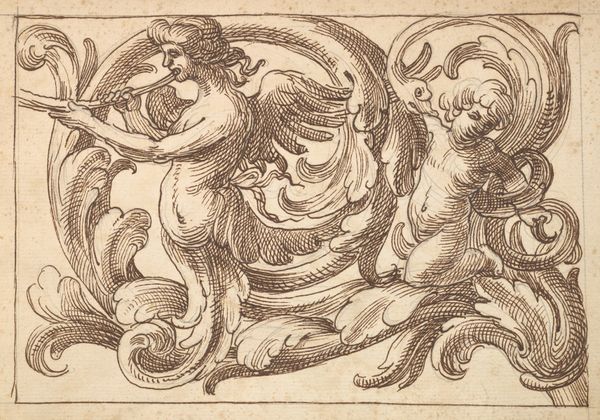
Horizontal Panel Design with Two Young Male Figures between Acanthus Rinceaux 1600 - 1650
0:00
0:00
drawing, print, engraving
#
drawing
#
baroque
#
pen drawing
# print
#
pen illustration
#
pen sketch
#
figuration
#
line
#
engraving
Dimensions: Sheet: 7 1/4 x 10 5/16 in. (18.4 x 26.2 cm)
Copyright: Public Domain
Editor: This pen drawing, titled "Horizontal Panel Design with Two Young Male Figures between Acanthus Rinceaux," dates back to sometime between 1600 and 1650. It immediately strikes me as incredibly dynamic, almost theatrical, with the figures intertwined with these elaborate, swirling leaves. What do you see in this piece? Curator: The immediate visual vocabulary points us to a dance between classical ideals and the burgeoning Baroque. These figures, seemingly caught in a moment of playful struggle, are framed, almost imprisoned, by the acanthus. Think of the acanthus as more than mere decoration. It represents enduring life, immortality; it's a visual echo of the eternal. Editor: So the dynamism I'm seeing is somewhat paradoxical? It's action framed by, as you said, an image of eternity? Curator: Precisely. Notice how the figures, though engaged, are also idealized, their bodies presented in a way that evokes classical sculpture. They become symbols, perhaps of youth and vitality, forever caught in the embrace of something larger than themselves. Editor: It's interesting how the anonymous nature of the artist adds to that symbolic weight, isn't it? They become representations of something bigger. Curator: Yes, anonymity can amplify the universal appeal. It invites us to project our own interpretations onto the work, enriching its symbolic potential. What stories do you see within the frame? Editor: I think the eternal frame highlights how ephemeral and fleeting the two figures are. It definitely enhances the feeling of theatricality for me. It's made me see the whole work differently. Curator: Indeed! Visual literacy helps to see the piece in an altogether different light.
Comments
No comments
Be the first to comment and join the conversation on the ultimate creative platform.
